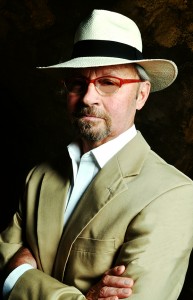 On a recent trip to Havana, my wife and I visited Ernest Hemingway—well, we visited the house he lived in for almost 20 years with two of his four wives. He willed the estate to the Cuban government. They preserved it exactly as he left it in 1960.
On a recent trip to Havana, my wife and I visited Ernest Hemingway—well, we visited the house he lived in for almost 20 years with two of his four wives. He willed the estate to the Cuban government. They preserved it exactly as he left it in 1960.
Before we got to the house, we arrived in Havana.
The city holds a kind of magical allure for most Americans of a certain age. (Older . . .I guess) I remember the closing of Cuba, the missile crises, and the embargo slapped on the island. Trying to dislodge Fidel Castro from power. Didn’t work. He died recently—still the supreme leader.
Havana offers so many fascinating things to see, do, and hear. (Music all over) But the path most tourists travel is the trail Ernest Hemingway left there years ago. I doubt many of the tourists ever read a word of his, but the guides push them along the trail.
Havana restored the oldest area beautifully, thanks to money coming through UNESCO. If you’re smart, avoid the crush of people coming off the cruise ships. In order to visit Ernest Hemingway, you must brace yourself for a similar onslaught. Hundreds of tourists crowd the old city. Guides take them through a prescribed series of landmarks which ends at the home of Ernest Hemingway.
We followed the crowds around the Viejo Habana (Old Town). Stood with dozens of people in the narrow street looking up at the Hotel Ambos Mundos—a hotel where Ernest Hemingway often lived. Then we stopped at a small, seedy bar called, La Bodeguita. Another of the endless bars that Ernest Hemingway frequented. This one was dark, dirty, and packed with tourists—none of them bought a drink. Outside, on the even smaller street, dozens of people took photos, pushed each other for a shot of the interior, and dodged the many musicians who wanted money.
Four blocks away we all found another bar called, La Floridita. Many people complained because it was closed. They wouldn’t have bought a drink anyway.
Next, people piled into buses and driven to the small suburb of San Francisco de Paula. It’s a dusty, shabby little place. Wooden buildings that probably predate Ernest Hemingway still stand in the sun. When the buses turned between two tall stone pillars and climbed the road, you know they’re getting close to the shrine of his house.
Out of the buses, people flood the grounds in all directions, seeking . . .something—since I doubt any of them (many foreign people) know much about the writer or his work. You can’t go inside the house. But all the windows are open and you stand next to hundreds of people, straining to get a view. The interior has been preserved as Ernest Hemingway left it. Even down to the bottles of booze on a cart in the living room. (The guy drank a lot)
There were so many people stomping around, I was surprised no one fell into the pool.
I found the preserved history fascinating. But even more interesting was what fame does to people. Hemingway has been dead for almost 60 years. And yet, people come from all over the world to get a glimpse. And meet Ernest Hemingway..






